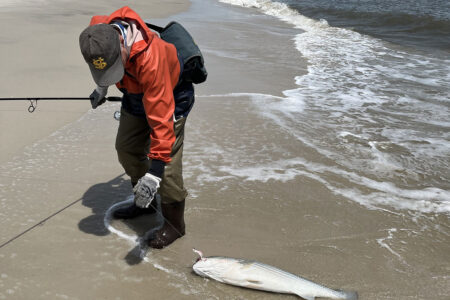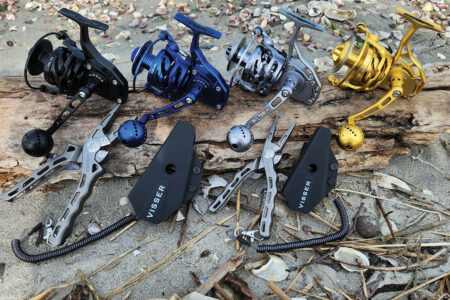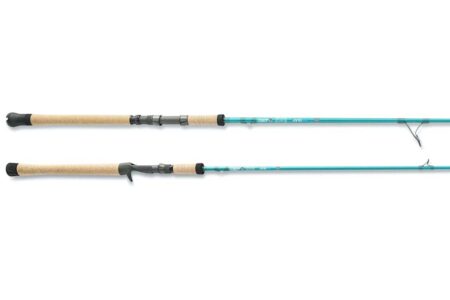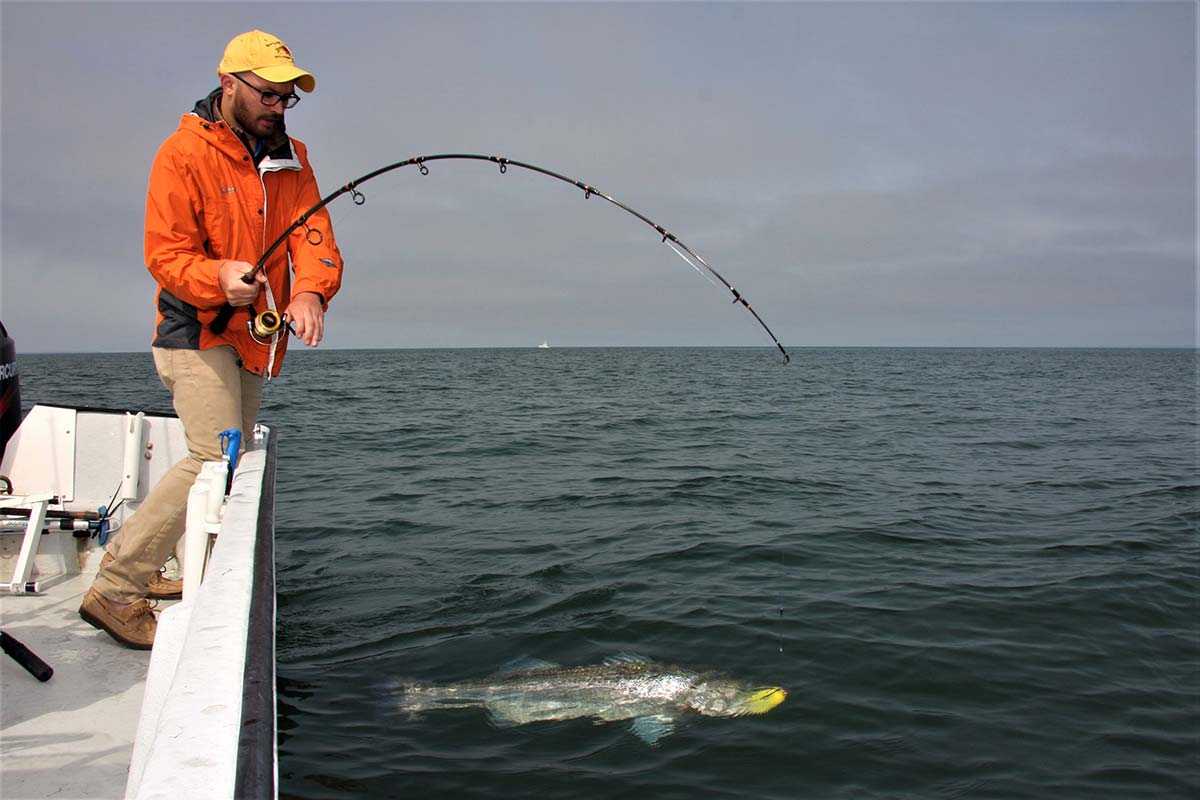
Ten tips to ensure that next rod purchase is money well spent.
We’ve come a long way from the Huckleberry Finn days of fishing on a creek bank with a cane pole and a worm. Nowadays, the terminology, materials, technology, and cost of fishing rods are difficult to decipher and calculate. If you’re looking for anything other than a $14.99 Spiderman rod-and-reel combo for a child, selecting the best outfit can be a daunting task. Here are 10 important considerations to help you choose the best rod for your application.
Narrow Your Search In Advance
Before you venture into a tackle shop, think about your goal and target species: What pound-test line you’ll use, what type and weight of terminal tackle you’ll fish with, what type of line you’ll spool on, and what size and type reel you’ll attach. Then do some research on rod manufacturers’ websites—they feature extensive rod categories and detailed charts to help you match the best outfit to your needs.
Bring Your Reel
Take your reel into the store. Carefully attach it to a rod and check it for fit, alignment, compatibility, size, balance, and overall feel. Companies build rods for a class of reels to suit their action and power. It’s important for optimum performance that you have a close match.
How Much Should You Spend?
The amount of money you invest in a fishing rod depends on your skill, knowledge, fishing frequency, and performance expectations. If you’re just starting out as a freshwater angler, your best bet is to choose an all-purpose outfit rather than buying three different bass rods for three different lure types.
Some manufacturers claim their rods won’t break, but anything will break if you slam it in a car door. You’re better off spending a little more money on a good outfit and taking care of it rather than spending less money on one that’s “indestructible” but won’t perform as well.
The more a rod costs the more sensitive, powerful, light, and responsive it will fish—usually. A good rod lets you detect and sense your lure or bait’s performance. You’ll be able to feel if your lure or sinker is bumping against mud, sand, gravel or rocks, and you’ll be able to feel a live bait or lure twitching, especially with braided line. Most important, a sensitive rod allows you to feel a subtle pickup when a fish ghosts in and inhales your offering.
Length
Most rods used by freshwater bass anglers are baitcasting outfits, while spinning outfits are saved for specialized techniques and light lures. A good all-around selection is a 6’6″ to 7′ medium or medium-heavy casting rod. This should handle most largemouth or smallmouth bass waters.
In saltwater, there’s a greater range of fish types, sizes, and conditions, but a proper multi-purpose inshore rod can handle many species. One ideal boat rod is a 6’6″ to 7’ medium-power conventional rod rated for 15- to 30-pound line and a 1- to 4-ounce lure/sinker with a medium-fast action. You could use this rod for porgies, black sea bass, blackfish, bluefish, striped bass, and fluke.
Spinning rods for saltwater anglers are primarily used for casting bait, metal lures, and plugs. A 7’ to 7’6” spinning rod is an ideal length for the cramped quarters of a boat, while beachgoers need to move up to an 8’ to 12’ rod for greater surfcasting distance.
Blank
A rod “blank” refers to the bare rod unit itself, before it’s rigged with guides, thread, grips, reel seat, and finish. Manufacturers create blanks from several different materials, but most commonly fiberglass, carbon, and graphite. Blanks differ greatly in cost, length, strength, thickness, weight, and action, with each having general applications and methods wherein it excels.
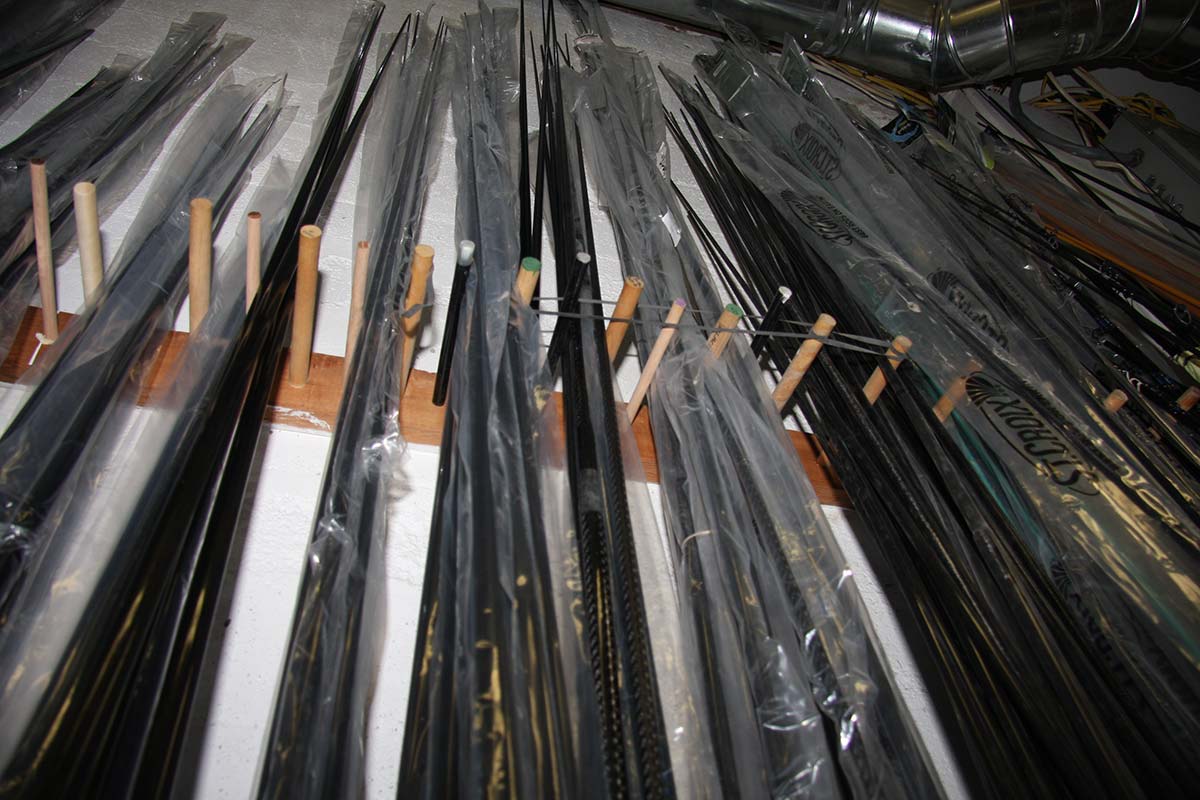
Action
The action denotes how much and where a rod bends along its length when you apply downward pressure on the tip.
Fast-action rods bend primarily in their top third to top quarter. Medium-action rods bend through their top half, while slow-action rods bend along their entire length. An example of a slow-action rod is fly rod, which has a parabolic curve (meaning the bend is similar throughout its length) and which allows the rod to “load” like a long bow (as in bow and arrow) to generate energy and transfer it to the line for a cast as it releases. Surfcasters like to load their rods too because distance, rather than pinpoint accuracy, is more important.
A fast- or very-fast-action is common in both freshwater and saltwater rods. A flexible tip provides feel and sensitivity, but once you detect and set the hook, the power comes immediately from beyond the bend into the main backbone of the rod, which means you don’t have to move the rod as far for a firm hook-set. Medium-action rods offer more casting distance ability due to that loading and transfer of energy principle, yet they still provide sufficient hook-setting power, but a stiff, fast-action rod helps chug a large surface plug.
Taper
The taper of a rod refers to the thickness of the blank from butt to tip. But the taper can also describe the thickness of the wall of the blank. In other words, as the rod becomes narrower, manufacturers can use less material in the blank, which permits more bend. In many situations, however, “action” and “taper” are interchangeable terms.
Power
Power describes a rod’s lifting strength. Rods are usually rated for their power in terms of extra-heavy, heavy, medium-heavy, medium, and so forth down to ultra-light. Line pound-test and rod power-ratings are closely linked and must be used within each other’s range. Otherwise, a high pound-test line can snap a light rod and a heavy rod can part a light line. Most rods are manufacturer-labeled with some combination of their length, action, power, lure weight, and line range, but those ratings aren’t uniform across commercial rod makers.
Graphite And Fiberglass
The highest-quality fishing rods obtain their action using varying building materials, which are usually layers of graphite or fiberglass bonded with resin. A “composite” rod blends both graphite and fiberglass, which serves a wider range of applications than either one alone.
Fiberglass is a less expensive material than graphite, but it’s durable and sometimes preferable for casting applications because it’s softer and ideal for creating medium and slow action rods. Fiberglass rods are heavier than graphite but more durable. When you’re on a budget and need power, rather than sensitivity, a fiberglass rod may be perfect.
High-grade graphite rod blanks require extensive heat processing, resulting in tougher and stiffer material, which means the manufacturer can use less material in creating a lighter, more sensitive, and more responsive rod. Achieving these extreme temperatures costs money, and the result is that the best graphite blanks are expensive. Builders sometimes reduce the cost of their blanks by incorporating less graphite and more plastic resin, but the result is a softer rod. The manufacturer can offset the softness by adding more material for a stiffer action, but the consumer ends up with a less sensitive, heavier blank. Everything is a tradeoff.
Graphite rods are available in a range of “modulus” ratings. Modulus describes the density of graphite fibers in a blank. The denser the graphite is the stronger and more sensitive the rod is. The higher the modulus or “IM” labeling number the stronger and lighter the blank.
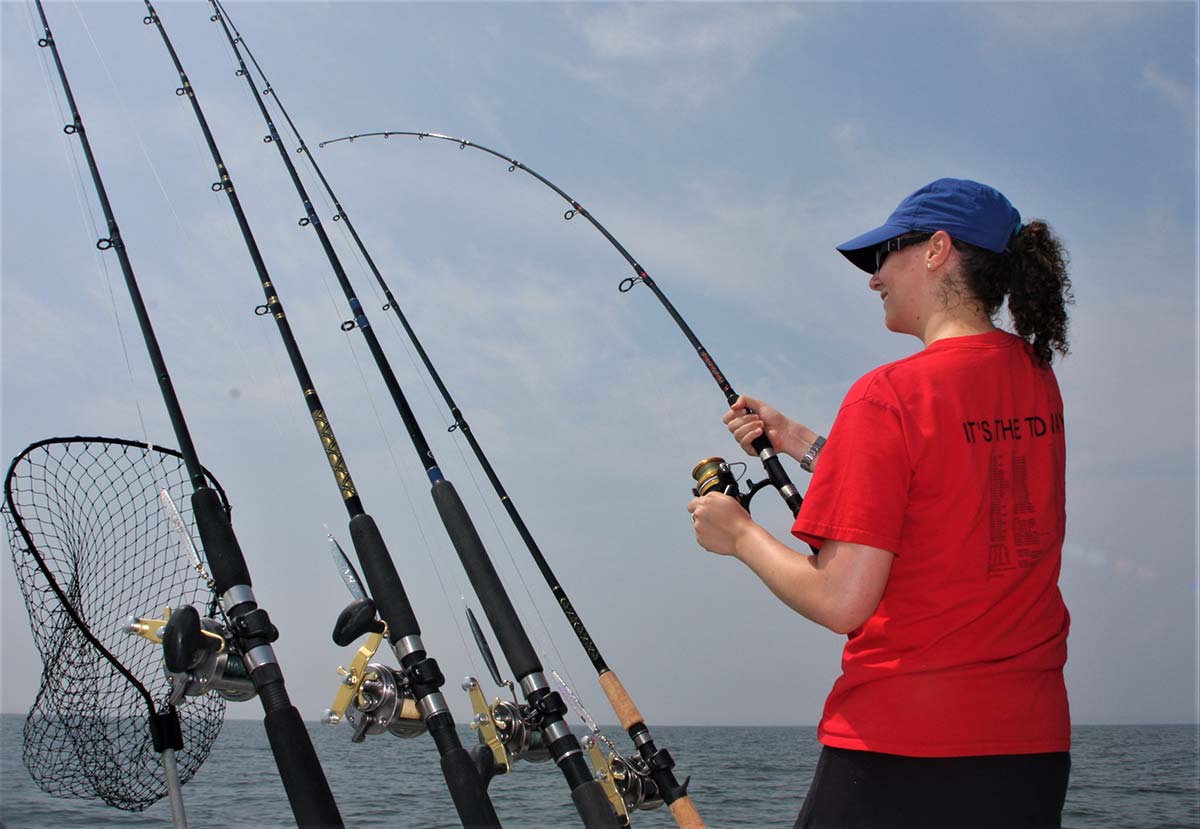
Guides
A rod sporting more guides costs more money. The cheapest rods have the fewest and poorest guides. A rod with more guides casts better than the same blank with fewer guides. Rods with more guides bend more uniformly throughout their length, which enables them to use all their available power for longer, more accurate casts and smoother fish fighting ability.
Never put a spinning reel on a conventional or baitcasting rod. That’s because the guides nearest the reel on a spinning rod are unusually large and called reduction guides. They control and reduce the large coils of line coming off a spinning reel spool while casting. The smaller and more distant guides are called running guides, and they carry the line along the remainder of a rod’s length.
Most guides feature a metal frame, support posts and a ceramic inner ring. Ring materials vary greatly in price, and can range from a few dollars to over $30 per guide. Silicon carbide (SiC) is one of the best materials available. It features an extra smooth surface for minimal friction when casting or free-spooling terminal tackle or fighting a fish. Friction causes heat, and heat ruins line. The better your guides the smoother your line will travel and the longer your line will retain its integrity.
Alconite, Hardloy, Hialoy, and aluminum oxide are other materials that are good quality, reasonably priced, and found on many commercial rods. Some sticks are now fitted with Titanium wire. These guides will spring back into position even when stepped on and bent flat.
Stainless steel posts won’t rust, but they’re brittle and will snap rather than bend, which means costly repairs and down time. Stainless rings are lightweight, reducing a rod’s total weight, but they’re not nearly as smooth as the ceramic types. Trolling with wire line, whether in lakes or oceans, requires especially durable guides to reduce grooving from the wire friction. Carbide or Silicon Nitride guides are suitable for this application, as are roller guides.
The bottom line is do your research first and then match the rod to your application. Purchase the best rod you can comfortably afford, and then take good care of it, including avoiding “high sticking” or resting it on the gunnel when fighting a big one.

